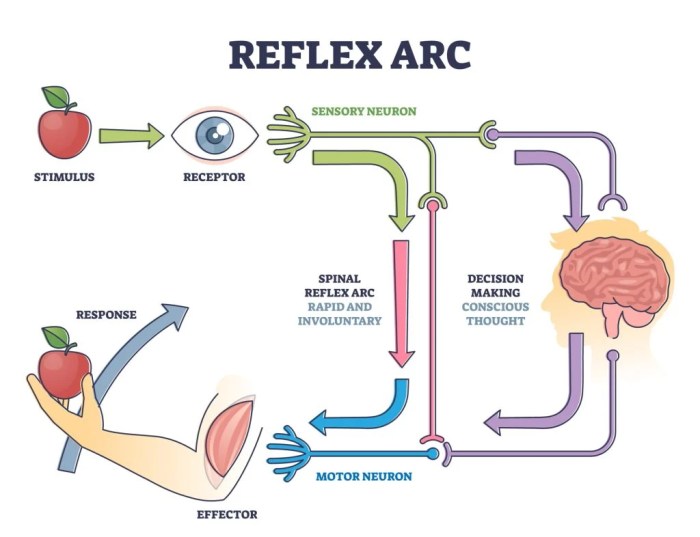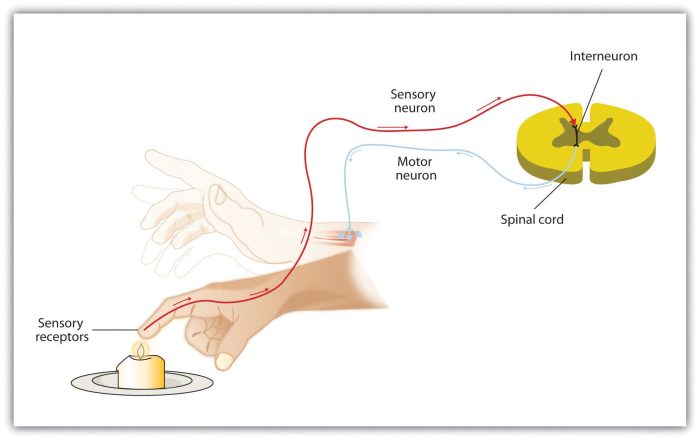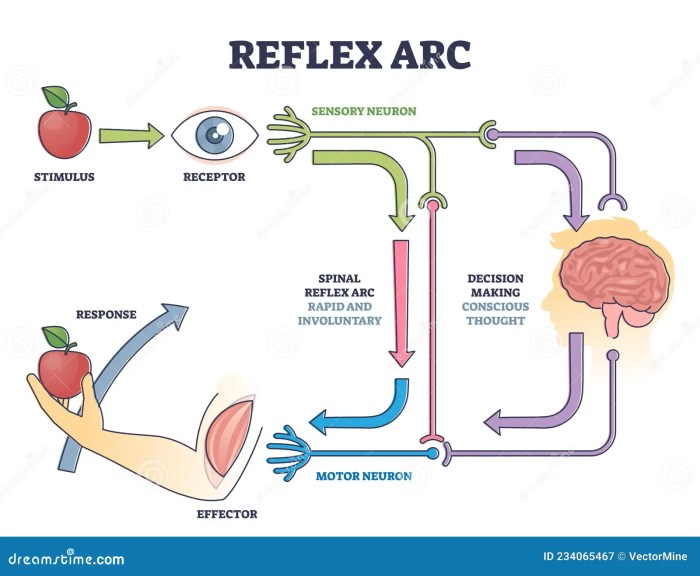Select all that are true of sensory pathways, the intricate neural networks that relay sensory information from our bodies to our brains, shaping our perception of the world. These pathways serve as the foundation for our senses, enabling us to experience touch, sight, hearing, taste, and smell.
Delving into the complexities of sensory pathways unveils a fascinating interplay of anatomy, physiology, and perception.
Sensory pathways are composed of specialized neurons that transmit sensory signals from receptors in our skin, muscles, organs, and other tissues to the central nervous system. These signals are then processed and interpreted, allowing us to perceive and respond to our surroundings.
Understanding sensory pathways is crucial for comprehending the intricate workings of our sensory systems and the neurological basis of sensation.
Sensory Pathways

Sensory pathways are neural pathways that transmit sensory information from receptors in the body to the central nervous system (CNS). They are essential for our ability to perceive and interact with the environment.Sensory pathways consist of three main components: receptors, sensory neurons, and the CNS.
Receptors are specialized cells that detect specific types of stimuli, such as light, sound, or touch. Sensory neurons are nerve cells that transmit sensory information from the receptors to the CNS. The CNS processes the sensory information and sends appropriate responses to the body.
Types of Sensory Pathways
There are three main types of sensory pathways: somatic, visceral, and special.
- Somatic sensory pathways transmit sensory information from the skin, muscles, and joints.
- Visceral sensory pathways transmit sensory information from the internal organs.
- Special sensory pathways transmit sensory information from the eyes, ears, nose, and tongue.
Somatic Sensory Pathway
The somatic sensory pathway transmits sensory information from the skin, muscles, and joints to the CNS. It is divided into two main branches: the dorsal column-medial lemniscus pathway and the anterolateral system.The dorsal column-medial lemniscus pathway transmits fine touch, proprioception, and two-point discrimination.
Fine touch is the ability to perceive the texture and shape of objects. Proprioception is the ability to sense the position of the body in space. Two-point discrimination is the ability to distinguish between two points that are close together.The
anterolateral system transmits pain, temperature, and crude touch. Pain is a warning signal that indicates tissue damage. Temperature is the ability to sense hot and cold. Crude touch is the ability to sense the presence of an object without being able to identify its texture or shape.
Visceral Sensory Pathway
The visceral sensory pathway transmits sensory information from the internal organs to the CNS. It is divided into two main branches: the vagus nerve and the splanchnic nerves.The vagus nerve transmits sensory information from the heart, lungs, and digestive tract.
The splanchnic nerves transmit sensory information from the abdominal and pelvic organs.Visceral sensory information is used to regulate the function of the internal organs. For example, the vagus nerve helps to regulate heart rate, blood pressure, and digestion.
Special Sensory Pathways
The special sensory pathways transmit sensory information from the eyes, ears, nose, and tongue to the CNS.The auditory pathway transmits sound waves from the ears to the CNS. The visual pathway transmits light waves from the eyes to the CNS.
The olfactory pathway transmits odors from the nose to the CNS. The gustatory pathway transmits taste sensations from the tongue to the CNS.Special sensory information is used to perceive the environment and to interact with it. For example, the auditory pathway allows us to hear sounds, the visual pathway allows us to see, and the olfactory pathway allows us to smell.
Sensory Coding
Sensory coding is the process by which sensory information is converted into electrical signals that can be transmitted by sensory neurons. There are two main types of sensory coding: rate coding and temporal coding.Rate coding is the process by which the frequency of action potentials in a sensory neuron is proportional to the intensity of the stimulus.
Temporal coding is the process by which the timing of action potentials in a sensory neuron is proportional to the intensity of the stimulus.
Sensory Adaptation, Select all that are true of sensory pathways
Sensory adaptation is the process by which the response of a sensory neuron to a stimulus decreases over time. There are two main types of sensory adaptation: rapid adaptation and slow adaptation.Rapid adaptation occurs within milliseconds and is caused by the inactivation of ion channels in the sensory neuron.
Slow adaptation occurs over seconds or minutes and is caused by changes in the metabolism of the sensory neuron.
Clinical Applications
Sensory pathways are important in the diagnosis and treatment of neurological disorders. For example, damage to the somatic sensory pathway can lead to loss of sensation in the skin, muscles, and joints. Damage to the visceral sensory pathway can lead to problems with the function of the internal organs.
Damage to the special sensory pathways can lead to loss of hearing, vision, smell, or taste.Sensory pathways can also be used to treat neurological disorders. For example, electrical stimulation of the dorsal column-medial lemniscus pathway can be used to relieve pain.
Question & Answer Hub: Select All That Are True Of Sensory Pathways
What are the main types of sensory pathways?
There are three main types of sensory pathways: somatic sensory, visceral sensory, and special sensory.
What is the function of the dorsal column-medial lemniscus pathway?
The dorsal column-medial lemniscus pathway transmits fine touch, proprioception, and vibration sensations from the body to the brain.
What is the role of the vagus nerve in visceral sensation?
The vagus nerve transmits visceral sensory information from the organs in the chest and abdomen to the brain.


